Android Central's Best of 2023 Awards: The best phones, smartwatches, tablets, apps, and more
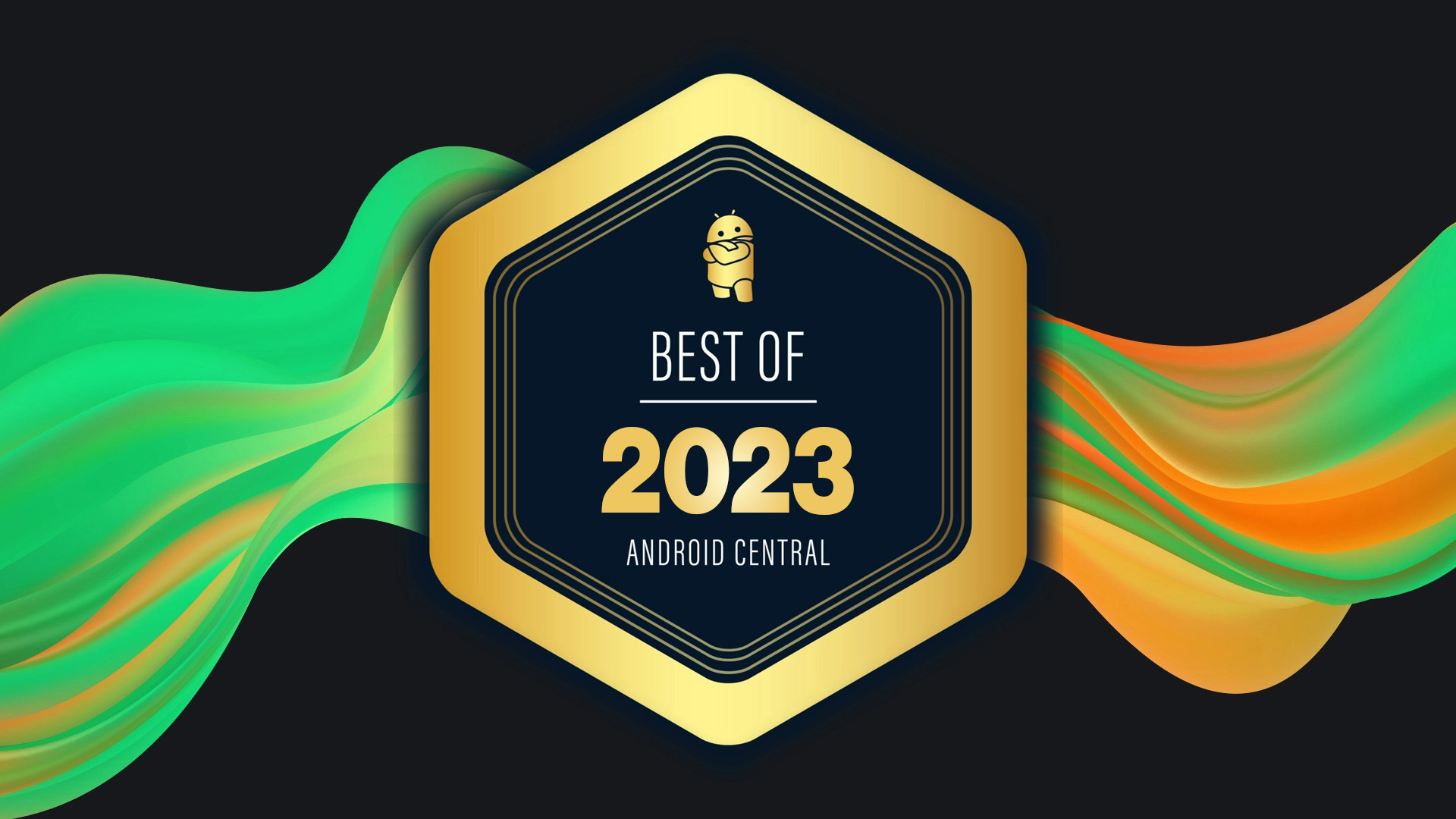
- Best Android Phone (Overall)
- Best Android Phone (Value)
- Best Android Phone (Camera)
- Best Foldable Phone
- Best Flip Phone
- Most Improved Android Brand
- Best Android Tablet
- Best Android Smartwatch
- Best Fitness Tracker
- Best Chromebook
- Best Smart Home Device
- Best Wireless Earbuds
- Best Streaming Device
- Best Phone Case Brand
- Best Video Streaming Service
- Best Music Streaming Service
- Best New Android App
- Best New Android Game
- Best New Single-Player VR Game
- Best New Multi-Player VR Game
And just like that, another year has ended. This was an impressive year for tech, with powerful new smartphones, more foldables, and impressive camera, and underscoring all of it was the new generative AI boom that has taken the world by storm. But despite the bevy of products, apps, and devices that came out of 2023, these are the items that we though were the best in their categories.
The following products are the result of votes from Android Central staff and contributors. Keep in mind, this is not an exhaustive list of every tech category, and while much of this list consists of new products, there are also some that launched in previous years that have had significant or enough updates and changes to warrant being on the list.
So without further ado, here is Android Central's Best of 2023 Awards!
Best Android Phone (Overall) — Samsung Galaxy S23 Ultra

This year, you didn’t have to wait long to get the best Android phone money could buy. The Samsung Galaxy S23 Ultra went on sale on February 17, 2023. According to most Android Central staff members, the competition for the rest of the year never stood a chance. After all, the S23 Ultra has everything you could ever want in a phone: a massive display, a built-in S Pen, five rear cameras that can zoom to space, the best performance on Android, and unbeatable battery life.
While it launched with a new 200MP camera sensor that clearly wasn’t quite ready for primetime, Samsung patched the camera a few months in and now maintains the best portrait mode, best zoom detail, and best video capture among its peers.
Plus, Samsung’s devotion to getting Android updates out quickly — and with tons of new features — remains unmatched by everyone but Google. Even then, only the Pixel 8 series has a better update commitment, and that phone’s performance doesn’t hold a candle to what Samsung offers here. If I’m going to nitpick the phone at all, it’s that its display is incredibly unfriendly to anyone with flicker sensitivity. Outside of that, though, you’ll find no better Android phone on the market.
Runner-up: Google Pixel 8 Pro
Get the latest news from Android Central, your trusted companion in the world of Android
I've long preferred Google's version of Android on its Pixel phones over most other Android skins, but most people would rather have all the features companies like Samsung and OnePlus offer on their phones. Still, the Google Pixel 8 Pro blew us away with its hallmark AI features, high-quality camera, and the new seven-year software update promise.
Since the launch of Google's own Tensor chipset alongside the Pixel 6 series, though, the company has dealt with weird bugs, glitches, performance issues, and overheating. The Tensor G3 inside the Pixel 8 Pro is, no doubt, the best chipset the company has ever made and solves many of these problems, even if it still doesn't offer the best performance at the price. If you're a gamer, I'd recommend buying a phone with a Qualcomm processor. There's really just no mincing words.
But Google has tailor-made its chipset to handle an impressive AI workload that powers features like Night Sight for Video, real-time translation, Google Assistant call screening, and so much more. Features like Magic Editor and Best Take do an incredible job of making photo editing on a phone as simple as tapping a few buttons. It's scary good, even if it's not the best phone of the year.
— Nick Sutrich, Senior Content Producer, Phones & VR
Best Android Phone (Value) — Google Pixel 7a
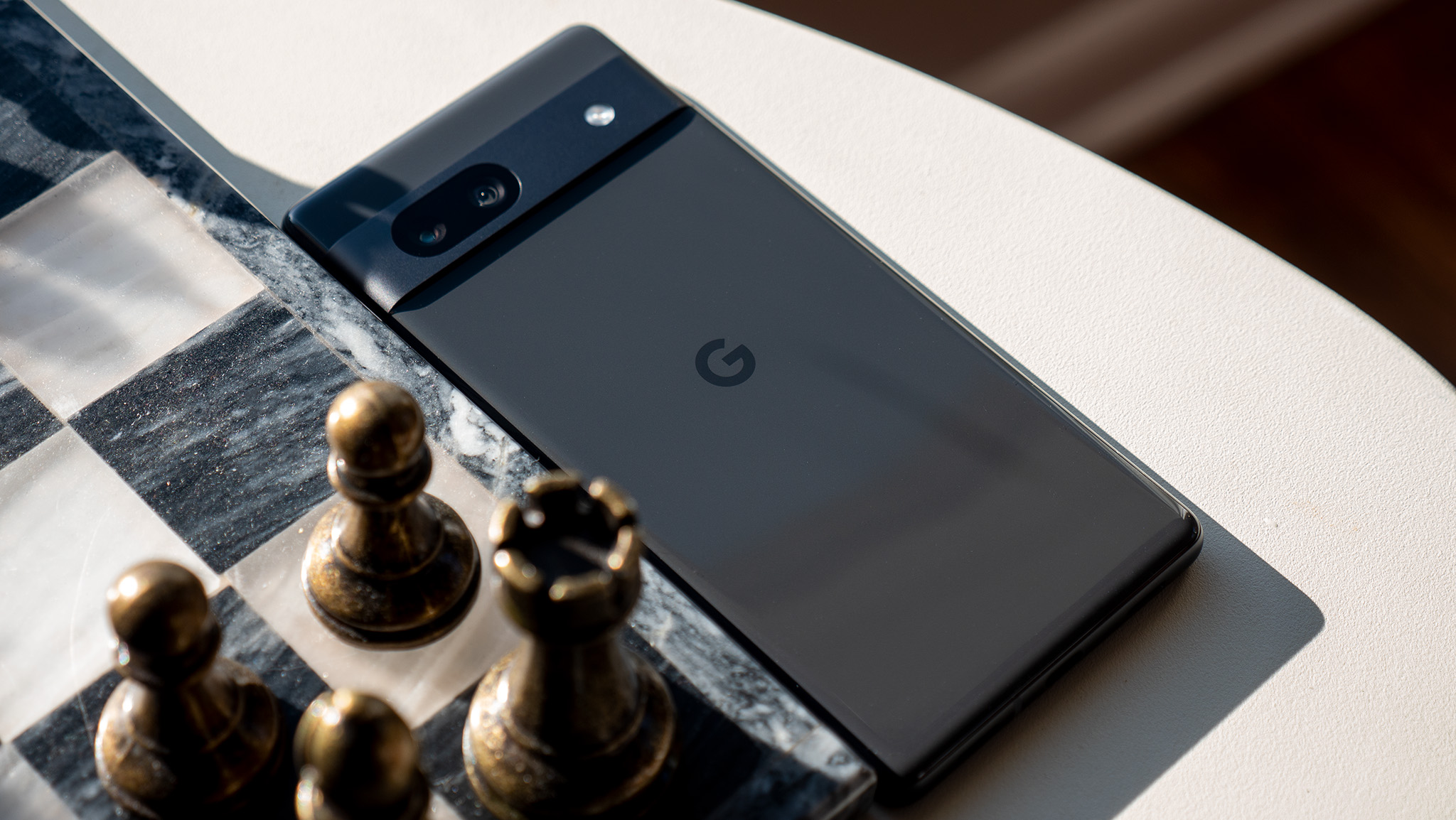
This year, Google proved that you don't need to shell out a lot of cash to get a terrific phone. The Pixel 7a has all the features you need, and you get the best cameras this segment has to offer. Google made a lot of positive strides with the Pixel A series over the last two years, but even with the Pixel 6a, it felt like the device was being intentionally held back — the lack of a high refresh rate panel was evidence of that.
The Pixel 7a has no such shortcomings; it has powerful hardware, the 90Hz OLED screen is fluid in daily use, the battery easily lasts all day, and you even get IP67 water resistance. The smaller 6.1-inch size makes the phone a lot smaller than its rivals, and that is a big deal in and of itself — particularly if you're not a fan of tall and wide phones like the Galaxy A54. I also like the design, and Google's decision to use a wide camera bar at the back gives Pixels a distinct aesthetic that looks very modern.
Obviously, the biggest reason for buying the phone is the cameras, and the Pixel 7a has plenty to offer in this area. You get all the best features of the Pixel 7 series, and the camera takes better photos and videos than just about every other sub-$600 phone I used this year. Software is another key consideration in this category, and there are far too few phones that have a clean interface that isn't riddled with ads. Thankfully, the Pixel 7a manages to offer just that, and you get a modern UI with all the Material You design flourishes, zero bloatware, and it will get updates faster than any other mid-range phone. I used all the other phones in this category, and nothing offers the same value as the Pixel 7a.
Runner-up: Fairphone 5
Want a phone that's easy to fix and built with sustainably sourced materials? The Fairphone 5 is the obvious choice. It doesn't have the best hardware in this segment, and its cameras don't quite measure up to the likes of the Nothing Phone (2) and Pixel 7a. That said, it is a good choice if you need a device with a removable battery — you just don't get that with any other device. You can easily switch out the battery (or any other part), and the Fairphone 5 will get eight years of software updates and five guaranteed Android OS updates — that's a huge deal.
And while that's all great, just know that the screen isn't quite as vibrant as other options in this category, and while I like the removable battery, the size of the battery itself is on the smaller side at 4200mAh, so it doesn't last as long. But if you don't mind the hardware omissions and want a sustainable phone that's built to last and incredibly easy to repair, you should consider the Fairphone 5.
— Harish Jonnalagadda, Senior Editor, Asia
Best Android Phone (Camera) — Google Pixel 8 Pro
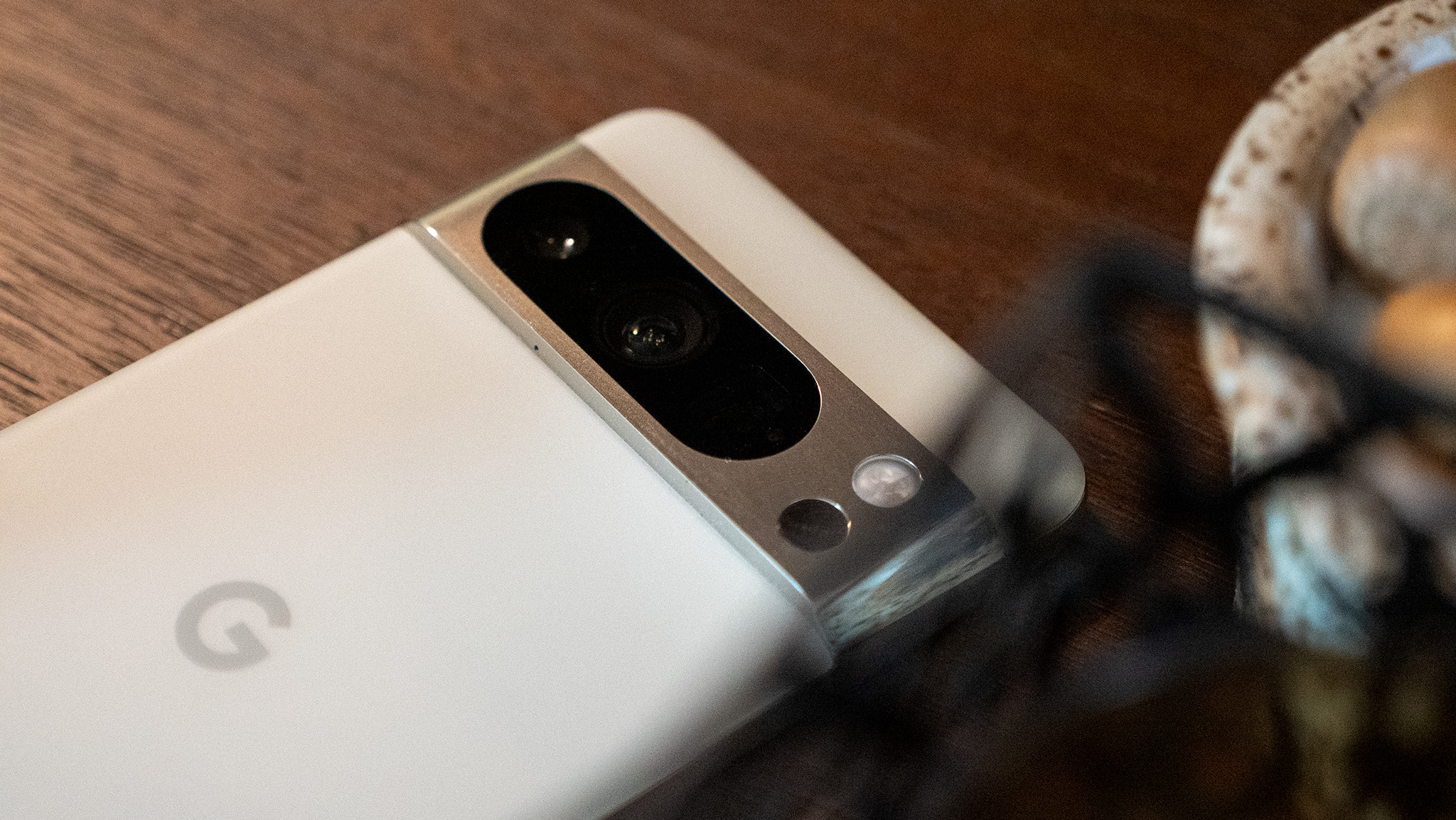
Out of 19 total votes from Android Central staff and freelancers, 15 were cast for the Pixel 8 Pro. As I said in my Pixel 8 Pro camera review, this is the phone to buy if the camera is the most important thing to you. Google's new camera UI that launched with the Pixel 8 Pro is incredibly well-designed and offers a quicker way to swap between photo and video capture, plus the bespoke modes for each capture type.
The Pixel 8 Pro offers full manual photo capture as well as RAW output, a stunning range of zoom levels, and the best low-light detail on any sensor you capture from. The difference in low light quality between the Pixel 8 Pro and the next-best Android phone camera is pretty astonishing at times, and it shows the work Google has put into ensuring it retains the camera quality crown.
Since launch, Google has added great features like Video Boost, which uses the power of Google Cloud and AI to process videos after they've been taken, sometimes substantially improving the quality, especially in low light. And for all those other times you're capturing normal videos or photos, you'll be regularly impressed with the quality, no matter the zoom level. That's especially true if you've got pets or kids, as the Pixel 8 Pro captures the clearest images of these squirmy subjects when compared to any other phone.
Runner-up: Xiaomi 13 Ultra
While Google tries to use AI and other tricks to create the best photos and videos, The Xiaomi 13 Ultra's philosophy is all in the name. This phone packs the most advanced camera hardware of any smartphone on the market, with a pack of four absolutely massive 50MP sensors on the back. But don't let that megapixel count fool you; these sensors are much larger than what Google or Samsung use on their phones, even if the megapixel count looks similar.
Those massive 1.6µm-sized pixels create an ideal scenario for capturing the best photos and videos you'll find on any modern smartphone. The main sensor lies behind a rare variable aperture lens that adjusts between f/1.9 and f/4.0 depending on the lighting. Even the telephoto experience is legendary, with a maximum zoom level of 120x. Take that, Space Zoom! And it manages to take the best portrait shots of any phone available today.
So, with all this praise, why didn't the Xiaomi 13 Ultra win the best camera award? Simply put, because you can't buy it in most countries. It's not available in the U.S. or India, and while you can always buy one from an import shop (or buy the Chinese version on a site like Amazon), it's not likely going to work well with your carrier of choice. Xiaomi has a global variant on sale in France, Germany, and a few regions, but it isn't anywhere as widely available as the brand's best-selling phones.
— Nick Sutrich, Senior Content Producer, Phones & VR
Best Foldable Phone — OnePlus Open

It's not often that a phone is capable of garnering a unanimous selection. While there were just two exceptions, the OnePlus Open was selected as the best foldable phone of the entire year. As the foldable market in North America has been dominated for the past few years, we weren't sure whether any company would be able to make an impact. OnePlus did just that with its first foldable phone, finally providing fans of this form factor with a flagship camera experience.
Arguably more impressive is the fact that there are very few compromises to be had with the OnePlus Open. It's been referred to as the "Goldilocks foldable" for those who think that the Galaxy Z Fold 5 is too narrow and the Pixel Fold is too wide. OnePlus even managed to release a foldable with a crease that's barely noticeable, and you can even use it with the OPPO Pen.
However, there are a couple of downsides, such as a lack of wireless charging and it not being available through carriers. However, OnePlus counters wireless charging with 67W wired charging speeds, going from 0-100% in less than an hour.
— Andrew Myrick, Senior Editor, Chromebooks
Runner-up: Honor Magic V2
With the Magic V2, Honor created one of the best-looking foldables available today. It's incredibly thin and light — it's just 3g heavier than the S23 Ultra — and it makes other foldables look outdated. Honestly, if you haven't made the switch to foldables because of the size, you should really give the Magic V2 a try; it has changed how I think about the category.
It's not just the size either; the Magic V2 has a smooth hinge that's easy to open, and it stays locked at various angles. The back is made out of vegan leather and is great to hold and use, and the inner and outer OLED panels go up to 120Hz and have exquisite colors. It is powered by the Snapdragon 8 Gen 2, has more memory and storage than you'll use, and doesn't miss out on the connectivity side of things.
You even get a great set of cameras at the back, and Honor somehow slotted in a 5000mAh battery into this thing. I'm still a bit annoyed that Honor hasn't launched the foldable outside China — it's releasing in Q1 2024 — but given what you're getting here, it is worth the wait.
— Harish Jonnalagadda, Senior Editor, Asia
Best Flip Phone — Motorola Razr Plus
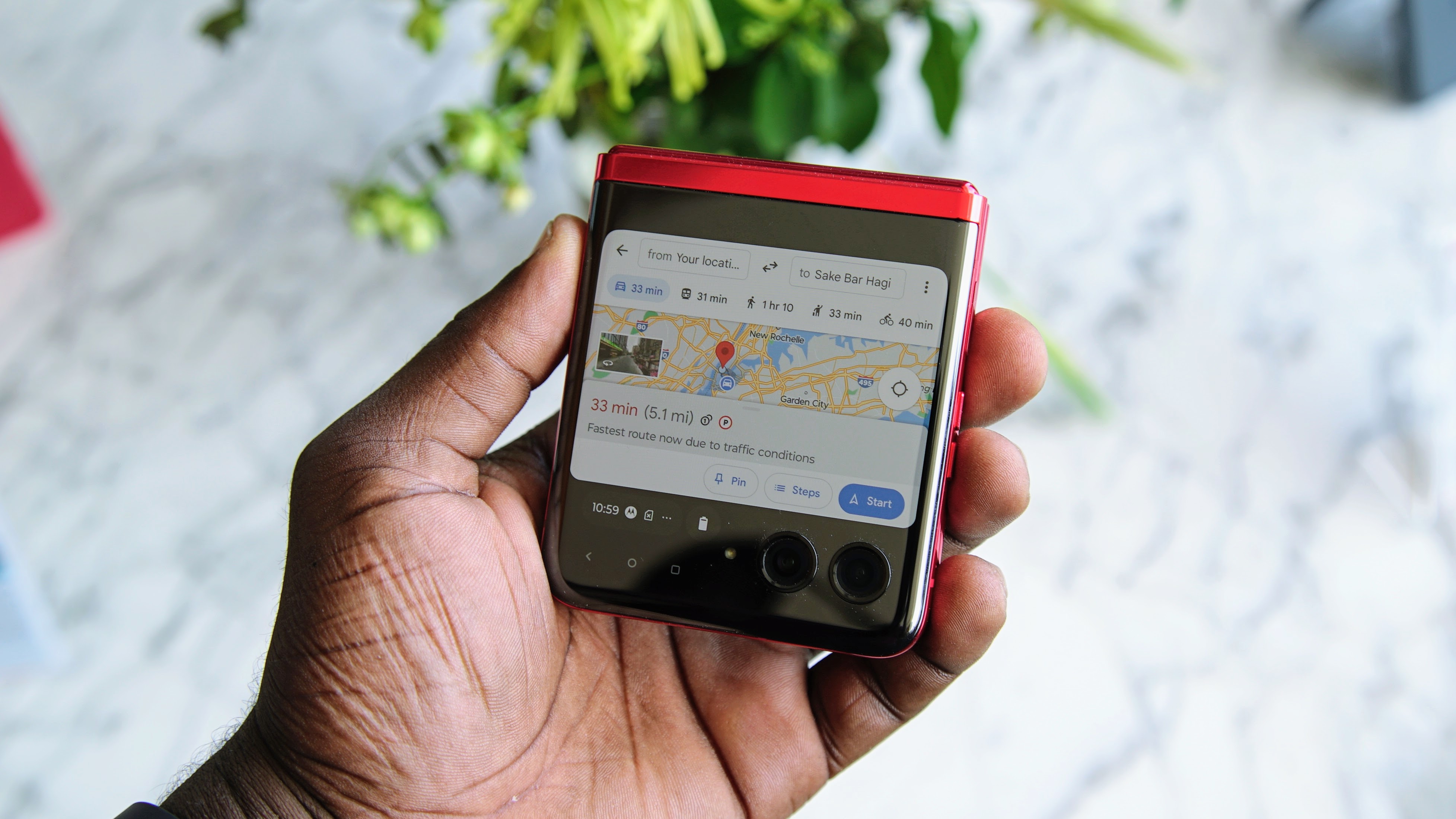
Motorola was the first company to launch a foldable flip phone with the iconic Razr brand, but it never really took off as a result of the underwhelming hardware and expensive price point. However, after a brief hiatus from foldables, Motorola came back in a big way with the Razr Plus.
The company launched its latest Razr with the idea that you shouldn't be limited to a handful of widgets when your phone is closed. So not only did Motorola introduce the largest cover screen we've seen on a flip phone thus far, but it also lets us do almost anything we want with it. That includes opening your favorite apps and games, taking selfies and videos, making payments and scanning boarding passes with Google Wallet, and more. You almost don't have to open the phone for most tasks if you don't want to.
The Razr Plus also has a sleek design, and the Viva Magenta colorway has a nice faux leather back. Internally, the Razr Plus has some impressive specs, from the nearly-creaseless display to the chipset powering the device. Sure, it's not perfect, and when pitted against the Galaxy Z Flip 5, the latter certainly has the better specs. But after my time using both phones, the Motorola Razr Plus has the better experience, and that makes it a clear winner.
Runner-up: Samsung Galaxy Z Flip 5
That said, we have to give the Galaxy Z Flip 5 props. Samsung finally dropped its tired 1.9-inch cover screen from previous models and gave us something much bigger to work with. The 3.4-inch cover screen gives us so much more room for activities... although it's unfortunate that Samsung hides its best capabilities behind menus and apps that don't even come preinstalled.
Still, the phone has a great set of cameras, and Samsung has really refined its One UI software. Battery life is also pretty decent, and the Z Flip 5 has a leg up when it comes to accessories like cases.
If I didn't love the Motorola Razr Plus so much, the Z Flip 5 would be my choice for a flip phone.
— Derrek Lee, Managing Editor
Most Improved Android Brand — Motorola
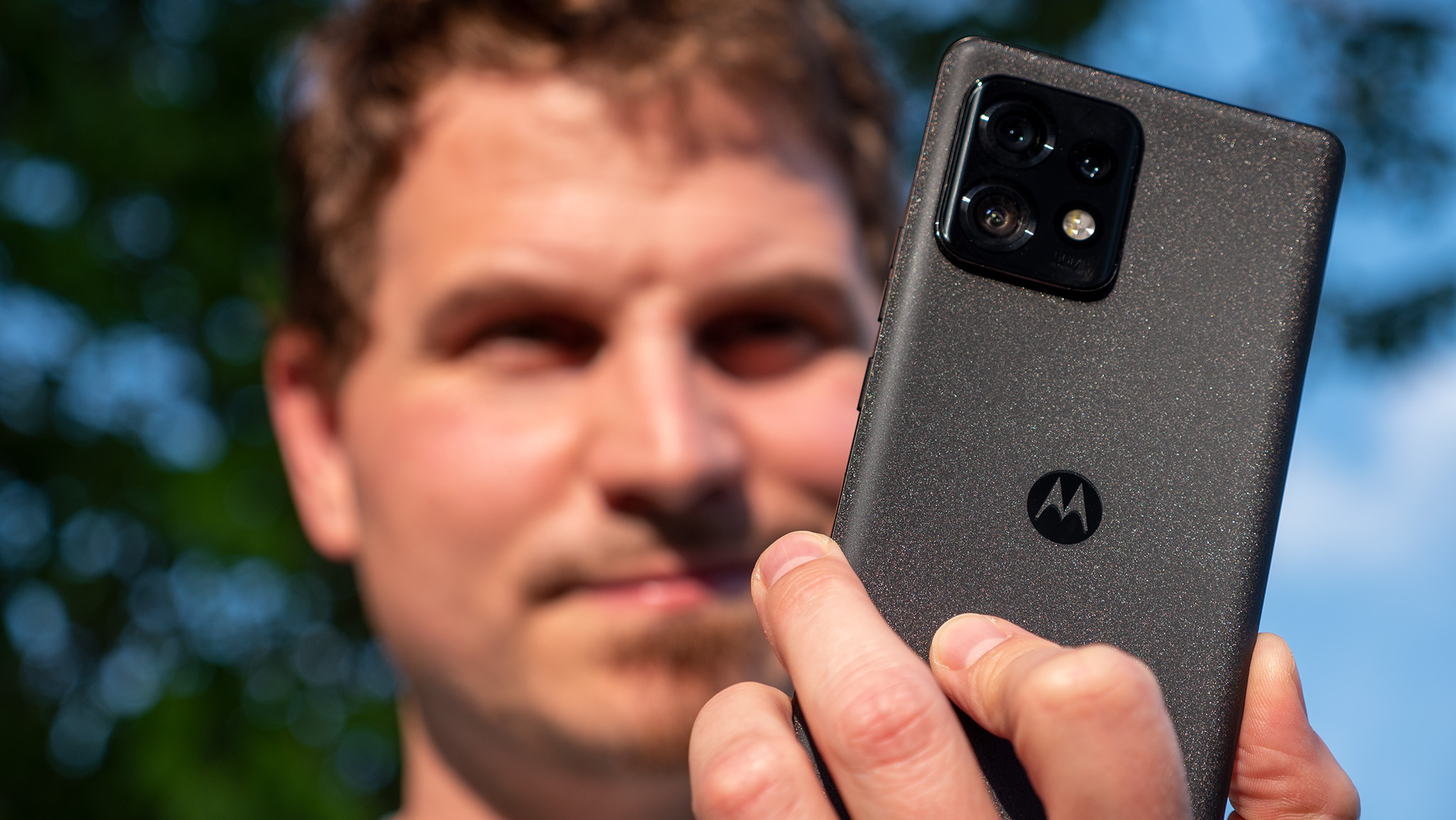
This isn't a category we normally have, but we felt it was necessary, given just how impressed we were with Motorola this year. In previous years, it felt like the company was just phoning it in (get it?) by launching forgettable midrange phones and flagships that could barely hold a candle to the competition. This year, it felt like Motorola had something of a wake-up call.
The Motorola Edge Plus (2023) put the company's improved software promise on blast while offering a sleek design that makes my head turn every time I see one. Motorola now offers three OS upgrades and four years of security updates with its flagship devices, and while that's still behind offerings from Samsung and Google, it's a major step up for the company. My Razr Plus has regularly received bi-monthly updates, some of which have even added new features and UI changes. This is already much more than I've come to expect from the company, and I hope things improve in 2024.
Motorola also upped its game this year by launching some of the best midrange phones you can buy in North America, like the Moto G Stylus 5G (2023) and the new 5G-laden Moto G Power. These phones offer the best bang for your buck with features like FHD+ 120Hz displays, two-day battery life, and more. And, of course, there's Razr (2023), which is something of a midrange flip phone and currently the cheapest foldable you can buy in North America.
Motorola has been on a roll this year, and we can't wait to see where things go from here.
— Derrek Lee, Managing Editor
Best Android Tablet — Samsung Galaxy Tab S9 Ultra

Trying to pick the best tablet of the year was a lot more difficult than expected. However, the Galaxy Tab S9 Ultra won out over the rest simply because it still offers the most well-rounded experience. An argument could be made for the Tab S9 Plus for the simple reason that you can get it with LTE, keeping you connected from wherever.
But it's tough to ignore the 14.6-inch Super AMOLED display of the Tab S9 Ultra, which makes it larger than a lot of the best Chromebooks and laptops. With a screen of this size, you can take it with you instead of your laptop, use it as a second screen with your PC, or just fire up some Netflix and chill.
Thanks to the Snapdragon 8 Gen 2, battery life is even better than its predecessor. Plus, with the tap of a button, you can get a desktop-like interface courtesy of Samsung DeX. On top of all of that, Samsung still includes its excellent S Pen in the box, although that's true for the entire Tab S9 lineup.
Runner up: Google Pixel Tablet
When the Pixel Tablet was announced, it quickly earned a spot on my wishlist as I've been hoping for a new Google tablet for years. What I didn't expect is for it to become a more integral piece of my smart home.
It's not going to win any awards for performance, and the display only maxes out at 60Hz. But, when attached to the Charging Speaker Dock, the Pixel Tablet immediately transforms into a better version of the Nest Hub Max. We just wish the Speaker Dock could do something when the Pixel Tablet isn't docked.
— Andrew Myrick, Senior Editor, Chromebooks
Best Android Smartwatch — Google Pixel Watch 2

Even though the Galaxy Watch 6 remains the best-selling Wear OS watch, most of the Android Central team has a soft spot for the Pixel Watch 2 and what it accomplished. It kept the sleek design we loved from the original while seriously revamping the tech beneath the rounded display surface.
By switching from a last-gen Exynos chip to a next-gen Snapdragon chip, Google gave the watch a power and efficiency boost while also ensuring that new Wear OS tech wouldn't automatically work better on Samsung's hardware. It makes Wear OS as a general ecosystem that much stronger because third-party brands like Fossil and Mobvoi will benefit.
The Pixel Watch 2 also stole sensors and tricks from the Google-owned Fitbit Sense 2, bringing it on par with its rivals for health data and making it the rare smartwatch to balance between traditional smarts and serious fitness tools in one awesome package.
Lastly, we're fans of Google's "stock" Wear OS software and how seamless and fun it is to use compared to One UI Watch. It's one more reason why the Pixel Watch 2 earned our top spot for the best smartwatch of 2023. But in the end, we're just suckers for how good it looks on our wrists; it feels like the status symbol watch that Android needed.
Runner-up: Samsung Galaxy Watch 6 Classic
I voted for the Garmin Venu 3 for this spot and was overruled. It's for the best, though, since the Samsung Galaxy Watch 6 Classic is much more of a true "smartwatch" and shouldn't be left off of this awards list.
After the Watch 5 Pro last year, Samsung returned to the svelte, physically rotating bezel that we loved from the Watch 4 Classic. It gives Samsung's watch a unique appeal and more accurate controls than your typical touchscreen or crown can deliver. Plus, of course, the Galaxy Watch 6 upgrades over the Watch 5 with larger displays, extra memory for a performance boost, and some useful software upgrades.
It may not have won the AC popularity contest, but it still has plenty of proponents here, and it claims the top spot on our best Android watch list for a reason: It's a really good smartwatch.
— Michael Hicks, Senior Editor, Wearables & VR
Best Fitness Tracker — Fitbit Charge 6
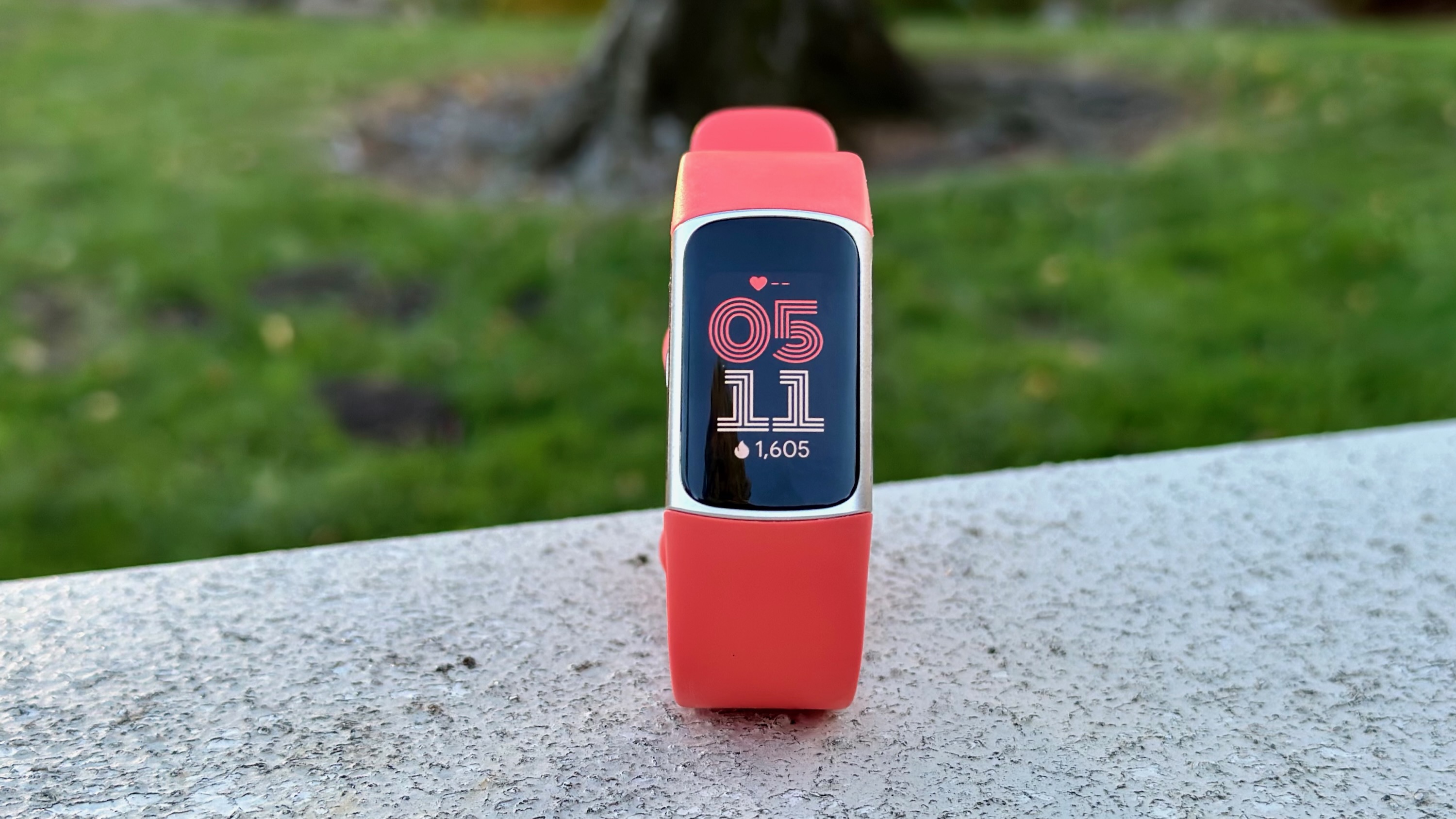
It was a slow year for fitness trackers in 2023, which made the Fitbit Charge 6 a near shoo-in for the year's award. But that doesn't mean that Fitbit didn't earn it.
It helps that it followed closely in the footsteps of the Fitbit Charge 5, a 2021 trailblazer that added tools like built-in GPS or advanced health sensors that most fitness bands avoid to save money. One can argue that the Charge 6, which looks exactly like its predecessor except for the useful side haptic button, didn't do enough to upgrade from that design. But why change a formula that works?
The Charge 6 is our top fitness tracker because it's still comfortable to wear, strikes the right balance with a display that's large enough to be useable but not so large that it's ugly, and comes with all the Fitbit Premium metrics that athletes want to get fitter. You just won't find a device this affordable that can measure blood oxygen, HRV, passive AFib, breathing rate, and skin temperature at night for a holistic look at your health and then tell you how hard you have to work out in the morning.
— Michael Hicks, Senior Editor, Wearables & VR
Runner-up: Xiaomi Smart Band 8
The Mi Band series is synonymous with budget wearables, and the Smart Band 8 continues that legacy. Xiaomi is using the same 1.62-inch AMOLED screen as last year, but it is brighter, and thanks to a larger battery, it lasts a little longer. You can easily switch up the look of the fitness band with a much wider selection of bands than in previous years, and Xiaomi even sells leather and steel options that make the device look much more upmarket.
You get the same suite of health monitoring sensors, excellent workout tracking, and exciting watch faces that are much more polished than previous generations. What's still the same is the terrific battery life — you'll only need to charge it once a week — and the value. Coming in at under $50, this is still the best-budget fitness band around.
— Harish Jonnalagadda, Senior Editor, Asia
Best Chromebook — Acer Chromebook Spin 714 (2023)

In a perfect world, the HP Dragonfly Pro Chromebook would take the crown, but the Acer Chromebook Spin 714 won this round. The second biggest selling point of the Spin 714 over the Dragonfly Pro is the convertible design.
However, the more important reason why the Spin 714 is our pick is because of its cost-to-performance, as it retails for $300 less, but we've seen it drop below $570. With this, you're getting the excellent Intel Core i5-1335U SoC, paired with 8GB of RAM and 256GB of storage. While Acer decided to ditch the built-in stylus, the 2023 version still supports all of the best USI stylus pens, regardless of whether they're USI 1.0 or USI 2.0.
With this spec sheet and level of performance, it came as little surprise to see the Spin 714 get all of the new Chromebook Plus features. The same is true for the Dragonfly Pro (and others,) but the final reason why the Spin 714 won is because of availability. You can only get the Dragonfly Pro from HP directly, and that's if it's even in stock. Meanwhile, there's a good chance that your local Best Buy will have the Spin 714 on its shelves, letting you walk in, grab one, and go.
Best Smart Home Device — Google Pixel Tablet
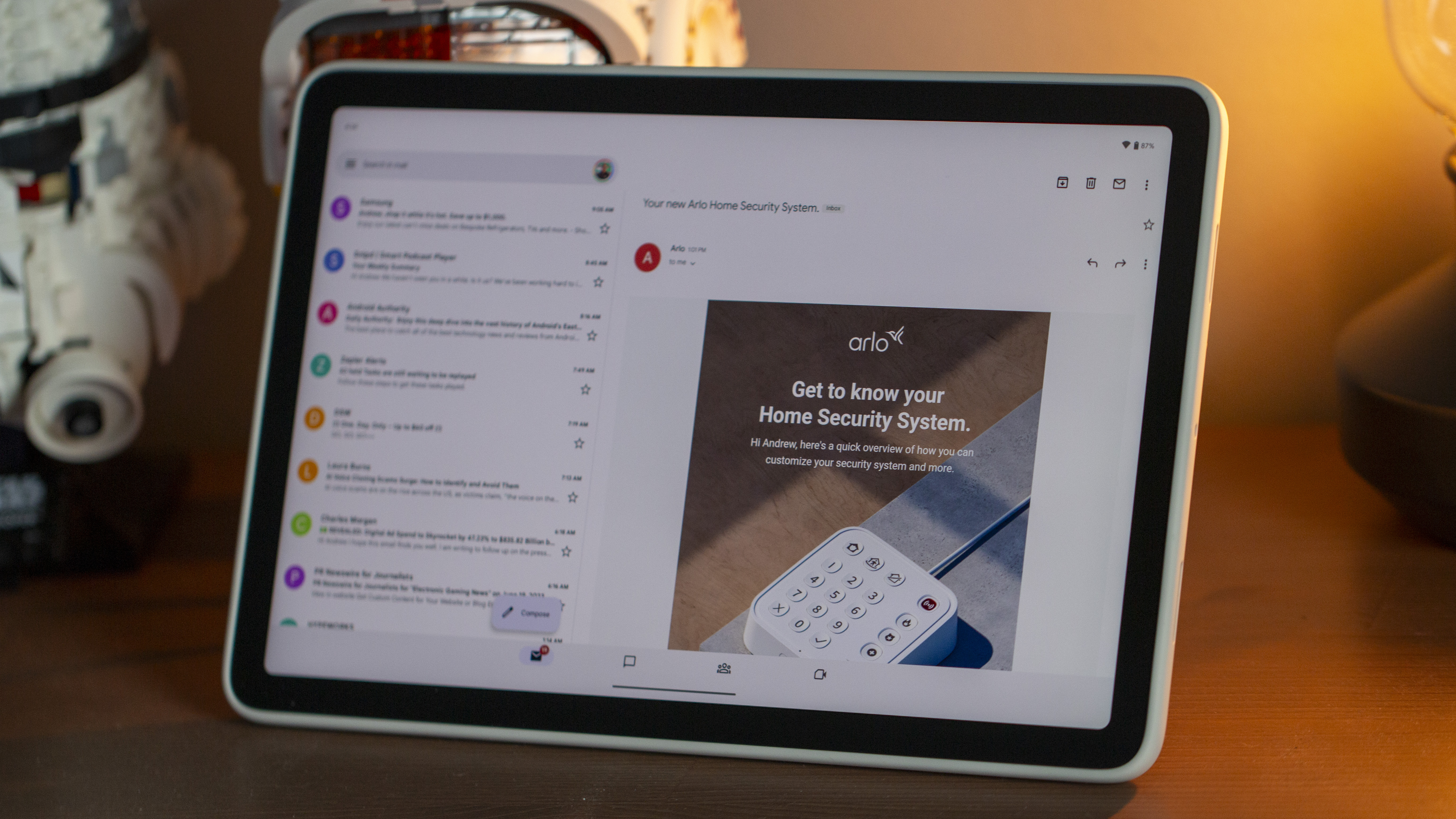
After years of all but forgetting the space, Google took its sweet time to release a new tablet. But when it did, Google didn't aim to become the best Android tablet money can buy; instead, it made the best Android tablet for your smart home. The Google Pixel Tablet is a good all-around device that can handle casual browsing needs and light gaming. It does a solid job of being a media-consuming device, too. However, the tablet takes form when placed on its dock.
Some of the best smart displays have come from Google in products like the Nest Hub Max. But those devices are getting along in years, and by making a 2-in-1 product in the Pixel Tablet, Google doesn't need a super high-end tablet. When the Pixel Tablet is attached to the speaker dock, it gets improved audio quality, stays charged, and goes into Hub Mode, making it act like a smart display. But the little touches Google put into the software, like the only tablet with Chromecast support, make it stand out as a good tablet and excellent smart home controller to top this year's best smart home device category.
Best Wireless Earbuds — Sony WF-1000XM5
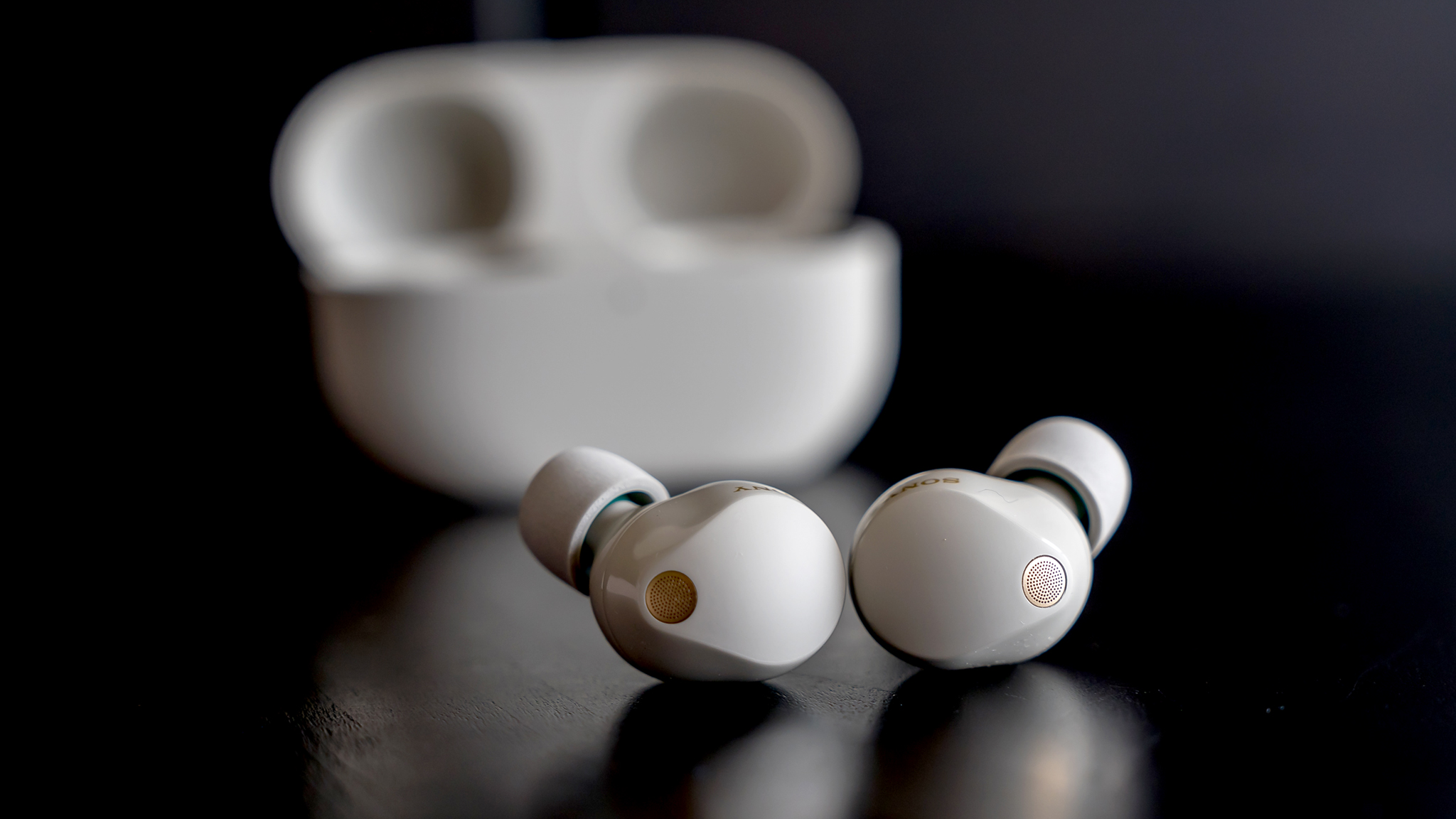
In a category where features and performance continue to improve in both premium and affordable pairs, the best wireless earbuds see the Sony WF-1000XM5 routinely at the top of the heap. The combination of a slimmer design, excellent audio quality, and world-class active noise cancelation (ANC) underpins a pair of buds that also include spatial audio and customization features you can personalize further. They're a rare case in that they come with foam ear tips for a snugger fit, something I found to be really ideal for trapping more of the audio in between my ears.
The gap is closing fast, though, so there are certainly other competitive earbuds that can provide great value for your tastes and budget.
— Ted Kritsonis, Contributor
Best Streaming Device — Chromecast with Google TV (4K/HD)
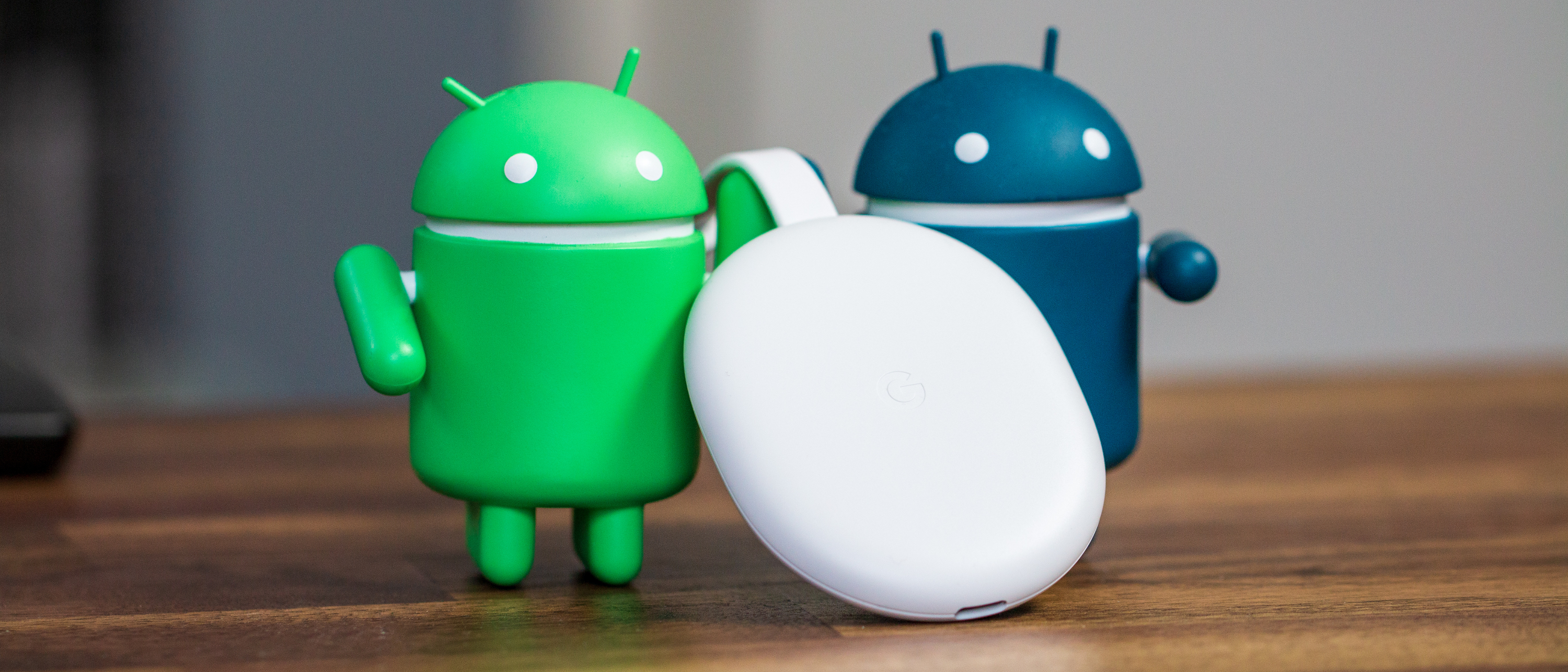
After a year or two, a smart TV can start to feel a little less smart with slow menus, bad app performance, and a remote that's seen better days. Chromecast with Google TV could be the perfect antidote with quick and responsive software experience and support for all of the most popular apps. The newer 1080p model comes in at just $30 with the Google Assistant included, thanks to one of the easiest voice remotes we've used. In fact, when we reviewed the Chromecast with Google TV, we said the streaming box was easily the best for most people. Not only that, but Google has continued to support it with security updates while enhancing Google TV with more content, UI changes, and features. Earlier this year, Google added the ability to access PS Remote Play from the device, making it possible to play games around your home without needing to move your console.
There are also plenty of new free channels available on the Live tab that were added this year, so you don't even have to spend money on costlier streaming services.
You have the choice between a 1080p model in white or a 4K model in white, pink, or blue with a remote to match. The 1080p model is a great value for those with an aging smart TV or a dumb TV in need of some streaming chops. Both versions support HDR10+ output, though you'll need the 4K model for Dolby Vision support. When it comes to audio, bit models support Dolby Atmos surround sound with HDMI passthrough, so you don't have to give up your soundbar or surround sound system to use it. If your TV is chugging, you don't need to throw it out when you can just upgrade it with one of the best streaming devices you can get.
— Sam Contreras, Contributor
Best Phone Case Brand — Thinborne

A little Texas-based indie brand, Thinborne is Android Central's favorite phone case maker of the year. We test hundreds of cases and covers from both old and new names in the biz. Thinborne, a sister concern of Caseborne, makes some of the sleekest, sturdiest, and most good-looking phone cases we've ever seen. It is seriously insane how thin the Aramid Fiber cases are and that they somehow managed to bake MagSafe into them. We commend the fact that such a small team managed to conceptualize and deliver such great-quality products.
Runner-up: Spigen
This is finally the year when Spigen knocked off Caseology's crown. We've always been fans of Spigen cases, partially because of their consistency and partially because they look so good. Let's also not forget that the brand's pricing is fantastic. What really gave Spigen the edge over other phone case manufacturers this year is the fantastic MagFit accessories lineup and the MagSafe adapter for Android that goes perfectly with the brand's cases. It's nice to see that one of the most trustworthy names in the accessories world is helping consumers bridge the gap between Android and iOS accessories.
— Namerah Saud Fatmi, Editor, Accessories
Best Video Streaming Service — Netflix
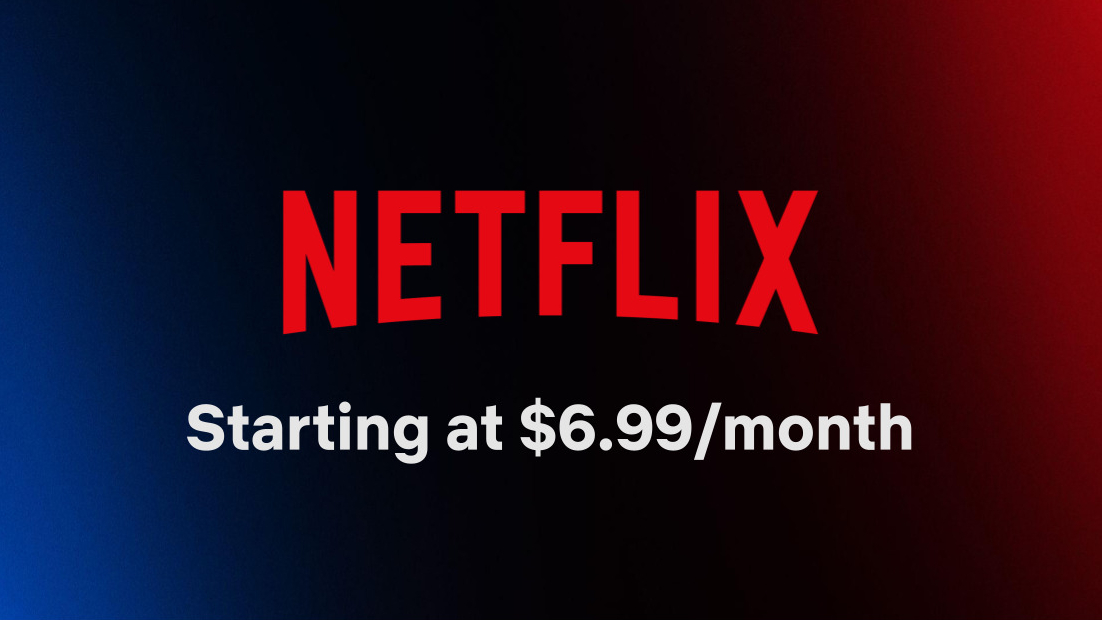
Despite price increases and a much-maligned crackdown on password sharing, Netflix somehow managed to earn our top spot as the best streaming video service of 2023. Maybe it's because they weren't alone in making these unpopular decisions — I can't even count the number of times I wrote about streaming service price hikes this year — or maybe it's just because of nostalgia. After all, Netflix was the first streaming service that most folks ever signed up for, and it's hard to stay mad at your first.
Interestingly, 2023 was a relatively quiet year for the streaming service. There was no massive cultural phenomenon, no "Squid Game" or "Stranger Things" that sent droves of viewers running to tweet their responses or chat about the latest twist. Instead, it was a year that made us consider the impact that streaming services will have on the future of entertainment and cinema. After all, "All Quiet on the Western Front" won four Oscars this year, breaking the record for the most awards ever given to a Netflix Original. And now, with challenging, star-studded films like "The Killer," "May December," and "Maestro" dominating the content library, lightning seems sure to strike twice at the next Academy Awards.
And then, of course, there was the WGA and SAG-AFTRA strike that made us finally look at the meager residuals paid out to actors and writers by streaming giants like Netflix. I won't go into all the issues here, but it's safe to say that 2023 was a watershed moment for the streaming industry. What will happen next? It's hard to say, but no matter what, Netflix clearly isn't going anywhere, especially as it ventures further into gaming with titles like Grand Theft Auto: The Trilogy – The Definitive Edition.
Runner-up: Apple TV Plus
Although it was a close call, Apple TV Plus has won out as the second-best streaming video service of 2023. Unlike other streaming service libraries that blend original titles with licensed TV shows and films from other studios, Apple TV Plus' biggest focus is on its original programming. They've been lucky enough to strike gold with a number of titles, such as "Ted Lasso" and the Best Picture-winning film "CODA," while series like "Foundation" have quietly earned their own piece of the pie with loyal audiences and critical acclaim.
Another nice thing about Apple TV Plus is its price. With a starting price of $9.99 per month, the streaming service is a lot cheaper than the competition for an ad-free plan, plus you get a 7-day free trial when you first sign up. That should give you plenty of time to explore the service without any big commitment.
— Patrick Farmer, Editor, eCommerce
Best Music Streaming Service — Spotify
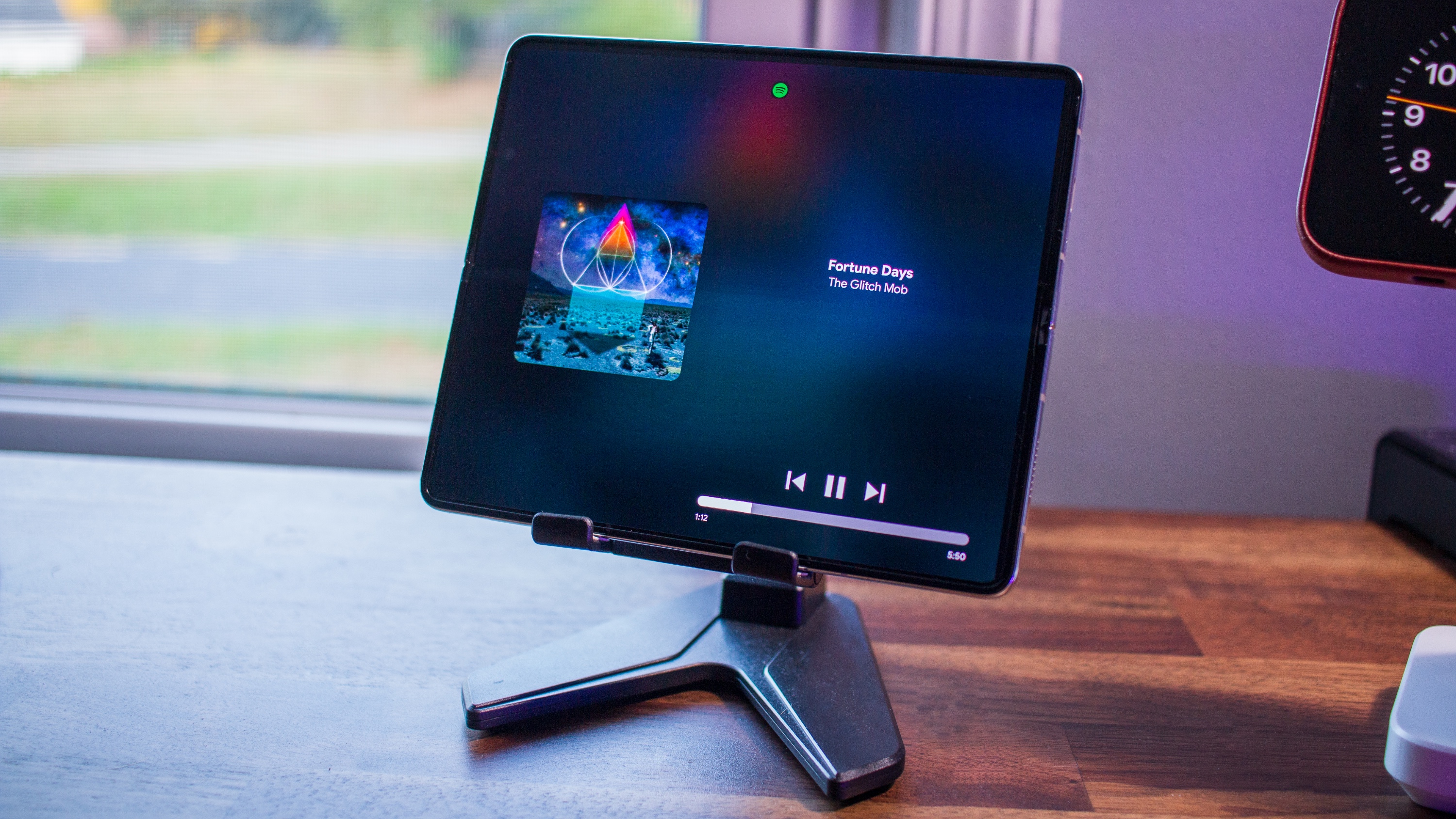
There are plenty of music streaming services available to choose from, but which one is worth spending money on every month or year? Spotify isn't without faults, but it's also the most expansive, integrated — and possibly the most personalized service you can find right now. Spotify Connect is super convenient for connecting with other devices to listen to music, and the podcast and audiobook libraries continue to expand, making the service feel more like an all-in-one audio platform rather than just a music streaming one.
New features are also bringing in other ways to discover and listen to music, including an AI DJ in the mix to help you sample what you might like most. It doesn't hurt that it's also widely compatible across different devices and ecosystems, and is easy to share an account with a partner or loved one
Best New Android App — ChatGPT

ChatGPT took the world by storm when it first came out, and now it’s done the same with the Android space. In July, ChatGPT made its debut on the Google Play Store and brought everyone’s favorite AI model to their smartphones. You can use the free version of the chatbot or subscribe and gain access to the paid subscription. As one of the most used AI chatbots in the world, it’s easily the best new Android app of 2023.
— Namerah Saud Fatmi, Editor, Accessories
Best New Android Game — Honkai: Star Rail
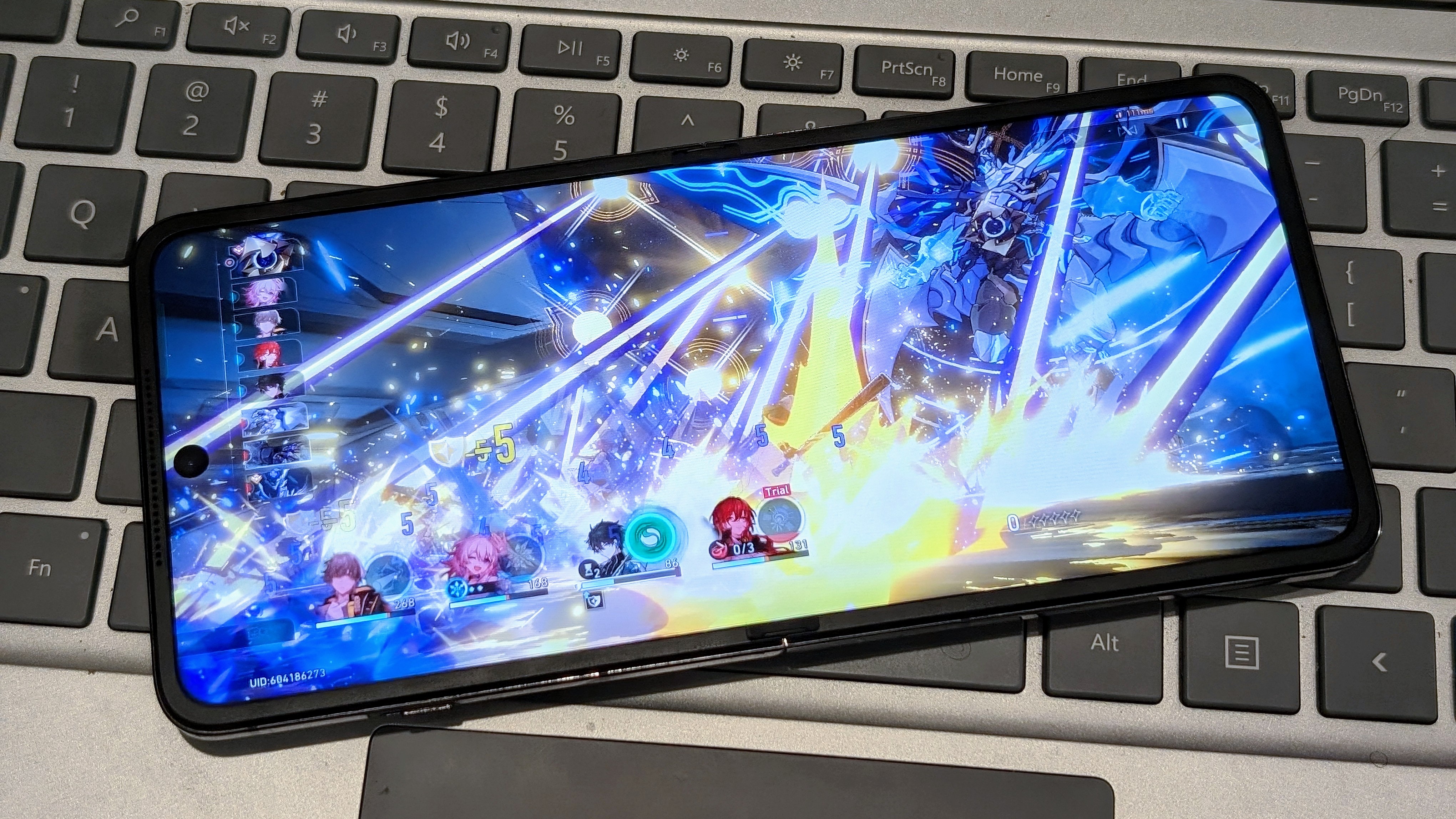
To say that Genshin Impact is a successful game would be a massive understatement. Its combination of action packed, open-world gameplay with free-to-play gacha mechanics led to it being a pop culture juggernaut and a free-to-play favorite. Unsurprisingly, there was a lot of pressure on the follow-up from developer HoYoverse and Honkai: Star Rail more than lived up to expectations.
Honkai: Star Rail ditches the real-time combat of its predecessor in favor of a classic, turn-based JRPG battle system, which immediately makes the game feel like much more than just “sci-fi Genshin Impact.” Each playable character in the endearing cast has both a role and an elemental affinity which makes battles require some sincere tactical strategy. Couple the engaging combat system with gorgeous silkpunk visuals and an ever evolving sci-fi story, and it’s easy to see why Honkai: Star Rail is something special.
— Nick Ransbottom, Contributor
Best New Single-Player VR Game — Asgard's Wrath 2
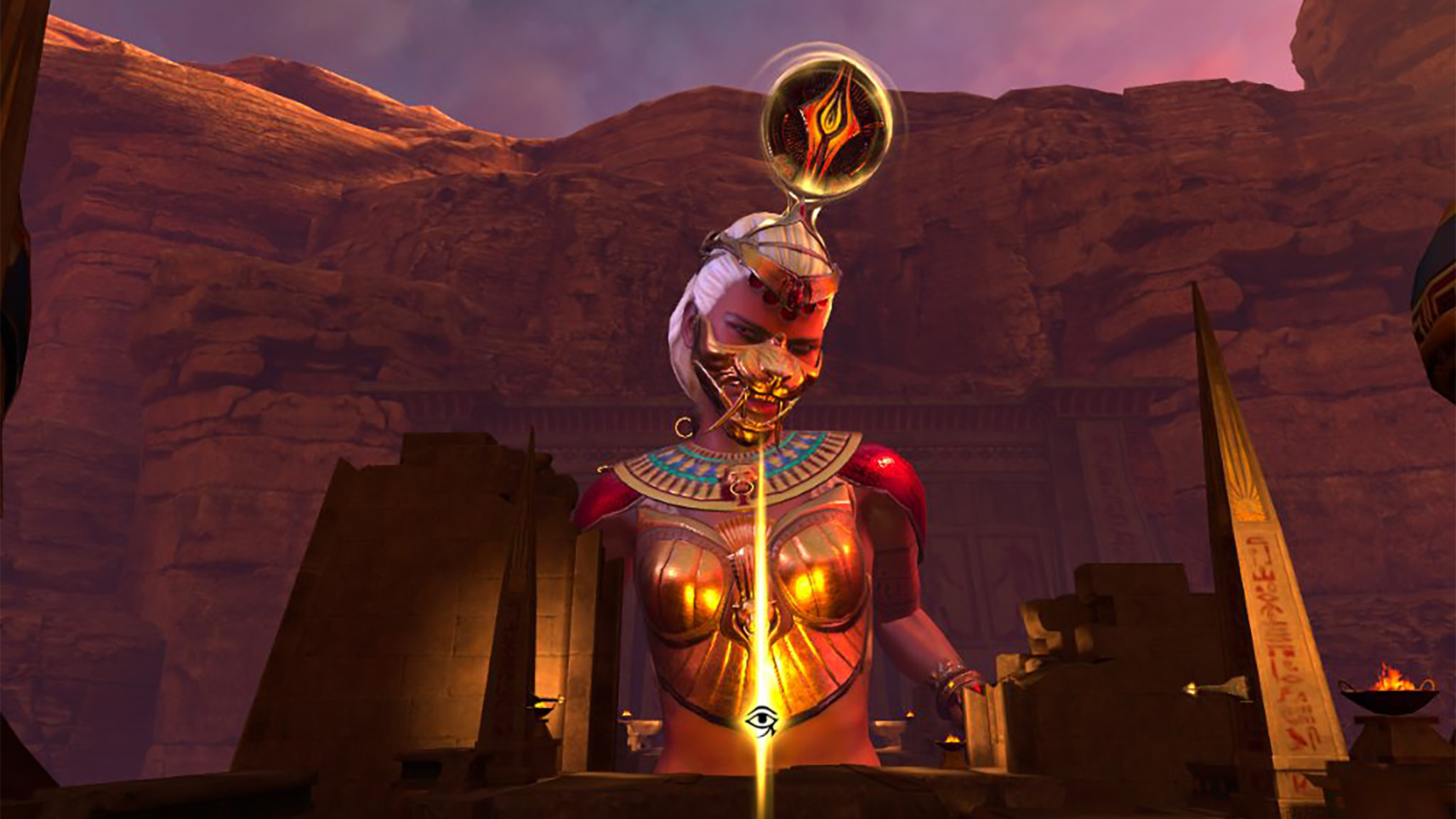
The first Asgard's Wrath is a critically acclaimed Oculus Rift PC-only game that you may have never heard of, but there's a huge chance that you've heard of its sequel, Asgard's Wrath 2, at this point. Meta has spent loads of marketing dollars on this game, and for good reason. Asgard's Wrath 2 can be described as the perfect amalgam of Skyrim and The Legend of Zelda with a fascinating mix of themes from ancient Egypt, Norse mythology, and so many more sources.
I've already poured nearly 30 hours into the game as of this writing, and I'm not even at the end of the second of seven "sagas" that the game is broken into. While I don't want to assign an "official" review score yet, my feeling at this point is that there's almost no way it won't get a 10/10 when I'm done with it. Even IGN, a website that doesn't spend a lot of time on VR gaming, completely agrees.
Asgard's Wrath 2 is one of those AAA-level games that only comes along every so often and is filled to the brim with things to see and do. The developers estimate you'll spend at least 130 hours finishing up the main story and seeing the world, with a seemingly unlimited number of things to do after you finish. It's the epic RPG we've been waiting for in VR, and it's the best reason to own a Meta Quest 3 this year.
— Nick Sutrick, Senior Content Producer, Phones & VR
Best New Multi-Player VR Game — Breachers
The Quest store is swimming in VR shooters, making it hard to decide where to start. Let me make it simple for you: Start with Breachers, especially if you're a fan of tactical team-based shooters like Rainbow Six Siege.
Like that game, it's a 5v5 shooter involving breaking into a target location or defending it from incursion. But it feels distinct by virtue of its motion controls, making it truly feel like you're the one scaling buildings, planting explosives, and aiming at foes from around corners. Best of all, it looks fantastic, even on last-gen Quest 2 hardware, but especially on the new Quest 3. You can see the amount of polish and care that went into making it.
As a multiplayer experience, it's great because you get the PvP challenge while also working with other players to achieve your goal. Even if you're new to the game, you'll hopefully have other players to carry you while you figure things out. And in between matches, there's a great lobby system where you can play minigames like basketball and bond with your teammates.
— Michael Hicks, Senior Editor, Wearables & VR

